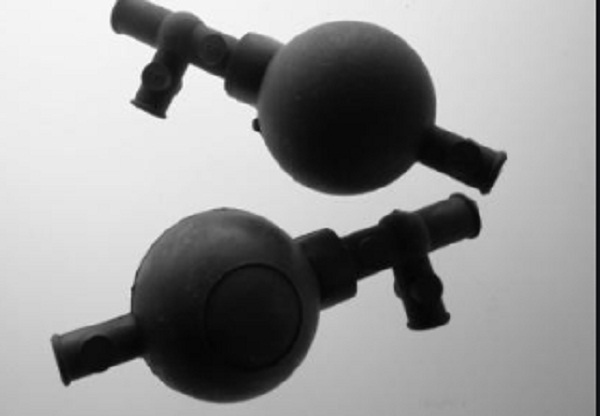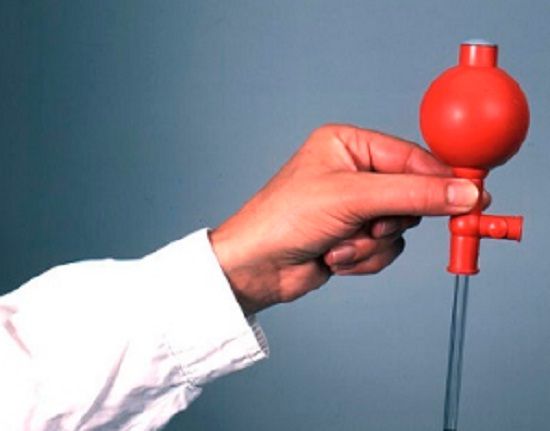Within the laboratory materials there are many that although its function is really important. They usually go unnoticed and not receive the merit of which they are deserving, this is the case of our today's implement. Surprise yourself with the skillful laboratory pipette filler and her function in the dispensing of liquids within the procedures. Know everything about this implement below.
What is the laboratory pipette filler?
This is an element that was born directly to accompany the pipette in all its measuring functions. He is basically your number one helper one, as it was devised to maintain the security conditions during the use of a pipette. Ensuring specificity in your work, so you can it should be said that pipette filler was born to help and at the same time improve the function from a pipette.
Despite suffering a high degree of indifference as to its function and use, has great significance and meaning in the laboratories of the world. This is one of the essential elements in each of laboratories regardless of the work area.


So without further ado, also known as a rubber pear or suction bulb, the pipette is an element that is combined with the pipette with the function of sucking liquids safely and accurately. This instrument was born from the need that existed when having to suck liquids with the mouth directly. Which posed a huge risk when working with toxic and irritating corrosive elements.
Description of the laboratory pipette filler
This implement is usually rubber with three valves formed by small glass balls, which are used as vacuum control.
Its operation will depend directly on the model of the pipette filler, be of pen or bulb. The most well-known is the traditional model, which is the bulb-shaped whose valves possess specific functions, which are:
S:
It is responsible for allowing the suction of liquids towards the pipette is located at the lower end.
A:
Located on a small arm at the upper end of the bulb, allows the air outlet of the pipette. This allows in principle that perform suction and secondly prevents the formation of bubbles. That
it can generate an error within any measurement made.
E:
It is the one that allows the exit or release of the liquid for its processing or disposal, located on the side of the bulb.
Then doing a quick summary of the functions of each valve, we have the following: (A) it performs the vacuum inside the bulb, (E) it allows the outlet of the liquid and finally (S) allows the suction of the same.
Use of the laboratory pipette filler
Basically it is used to measure and dispense liquids using a graduated pipette. So to perform this, the following should be followed step:
Place the pipette filler in the upper mouth of the pipette to be used, according to the volume we will work.Take out the air by pressing the valve A and pressing the bulb in its central part.Position the pipette over the liquid and press the S valve to raise the liquid to the pipette.Dispense the liquid by pressing the valve E.
If in any case it is desired to dispense all the liquid and there are a few drops of it, for the valves are pressed at the same time S and E.
Types of laboratory propipettes
The pipette fillers are instruments with high precision although not they have a very elaborate structure. This is reflected in the types of existing pipette fillers, basically they are the following:
Rubber pipettes: They are the bulb-type ones that already we have mentioned, they are the traditional type.
Pen type wallets: They are a version Moderna version of the traditional, more ergonomic designed for use with just one hand. They have a wheel that when rotating vertically upwards sucks and down dispenses. They usually have a color that indicates their capacity. Which are: blue 6ml, green 10ml and red 25ml.
Electric kettle: They are automatic and have a speed regulator with a suction meter that facilitate in to a large extent the work. However, they are expensive and perform the measurement with equal specificity than the previous two.


What is a pipette filler for?
A laboratory test serves to prevent accidents related to the intake or contact of chemicals with the mucosa buccal. By eliminating the need to perform direct suction of the compounds with the mouth. In addition, it is also used for carrying out measurements perfect in combination with the pipette.
Highlighting that its special vacuum sealing design allows you to hold for a certain time the liquids or substances inside from the pipette. Which is a great advantage when transshipping or transport the liquid to another container.
Importance of a laboratory pipette filler
The creation of the pipette filler was an excellent solution to the large number of accidents caused by direct pipetting with the mouth. This translates into a decrease in accidental poisoning and corrosion of scientists. Which resulted in a high worldwide transcendence in the laboratory field. Together with this, since its creation it has been an infallible guarantee of the quality of liquid measurements. Since it allows the technician to focus on a correct measurement and not on the risk involved.
We have already revealed everything about the laboratory pipette filler so it is to be assumed that it will find you surprised. Of the scope that a small laboratory element possesses both in the safety and in the accuracy of the results in a process. I invite you to look at other of our publications so that you know many more laboratory materials.

